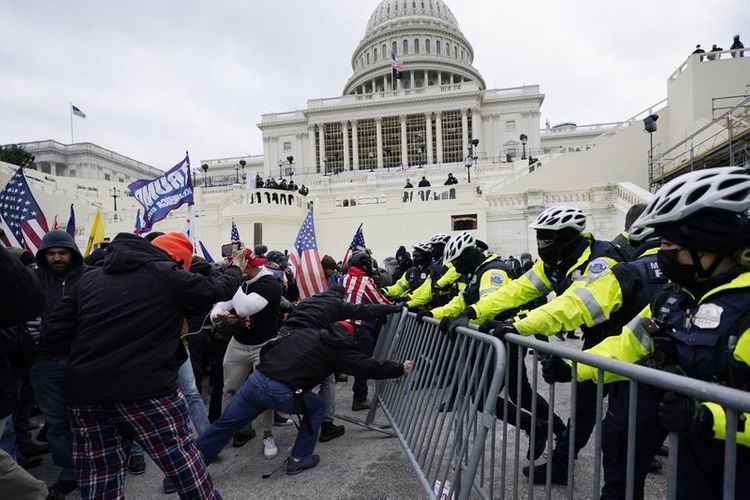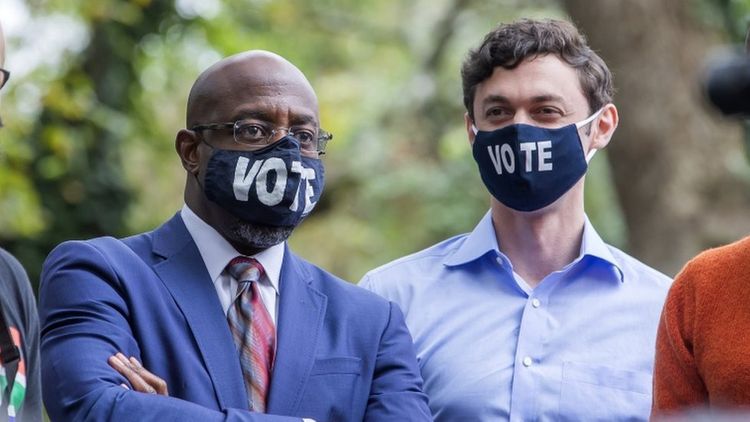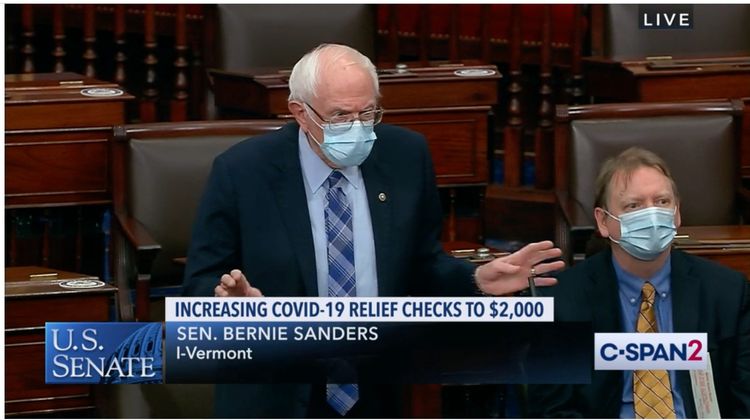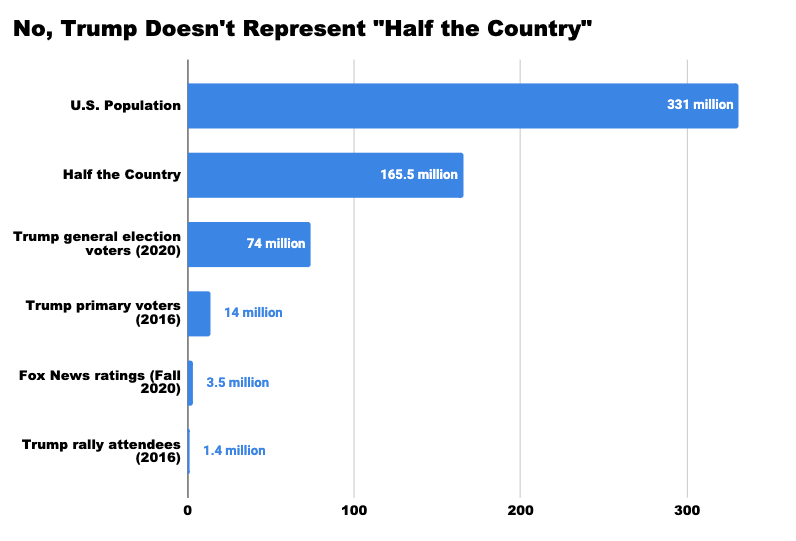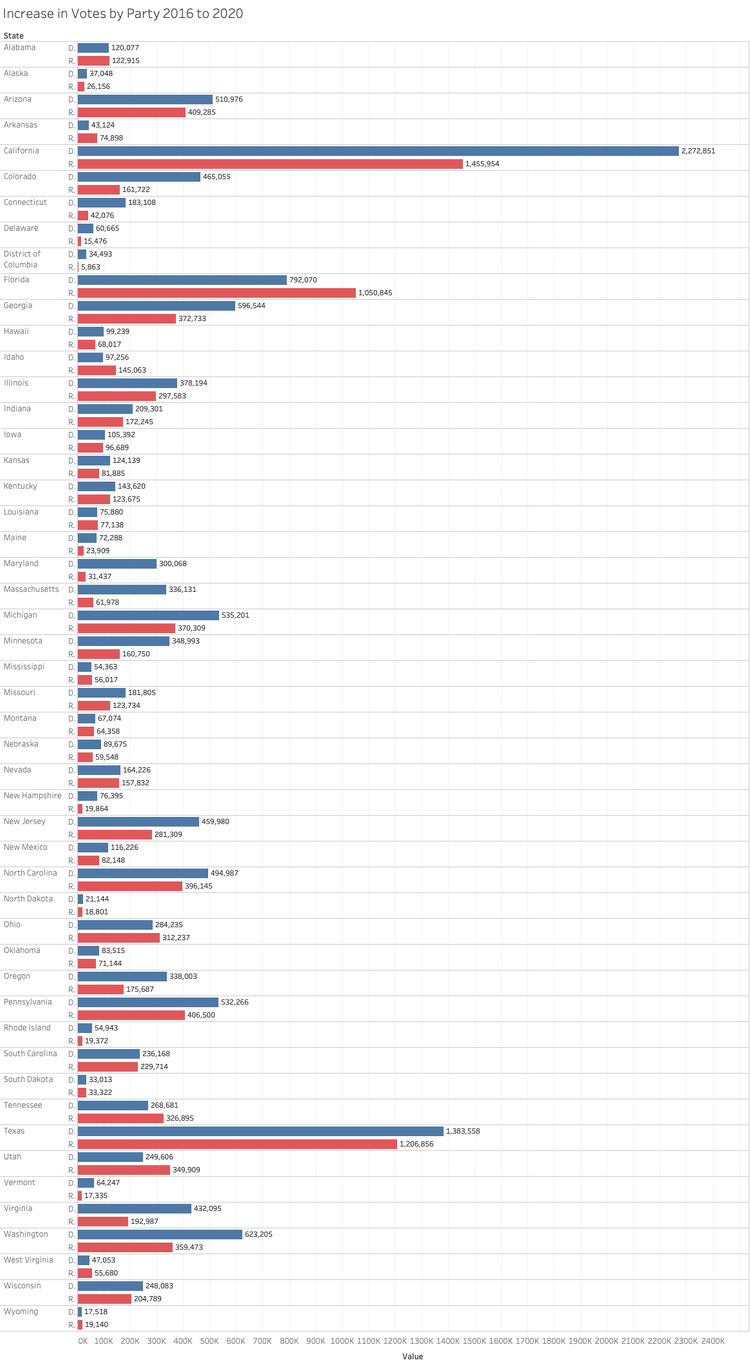Making Sense of the Attack on the Capitol
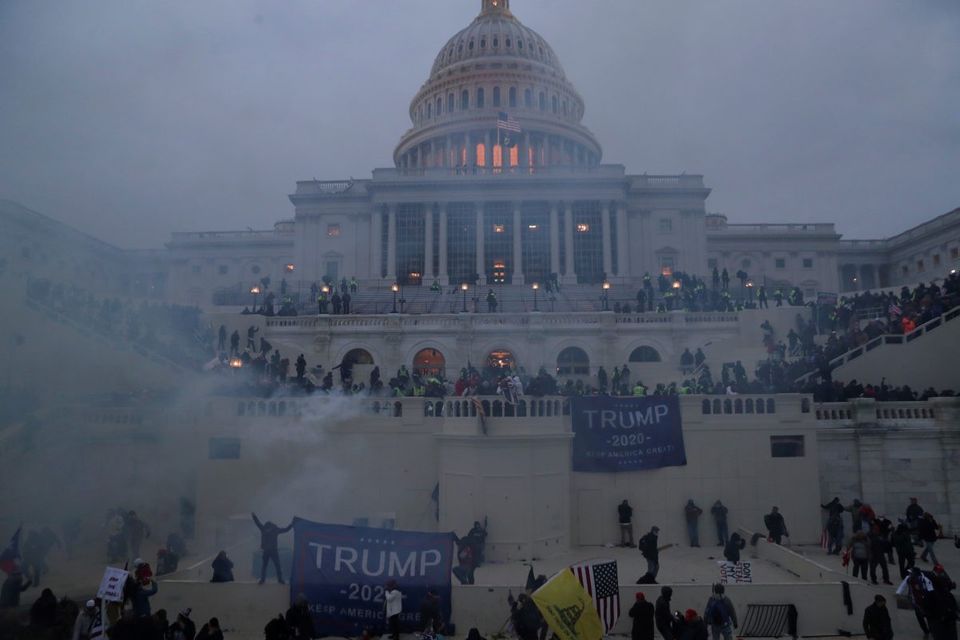
This is a loose transcript of the Close Read podcast for 1/9/20. I’ll be cross-posting these to Medium with more frequency.

As I’m recording this, I can look out my window and see the very top of the Capitol dome. I’ve lived in Washington for 15 years. My grandmother was actually born here. Her mother worked in the Senate dining room. Her father was a mason and he did some work at the Capitol, too.
Washington is our capital city. It’s also home to 700,000 people. This is where we live and play and work and worship. And this week the Capitol — which is geographically and politically the center of our city — was attacked.
I’ve obviously been following this closely, so I wanted to share some perspective from the ground and also talk about the rhetoric of insurrection, how we’re trying to process what are some unprecedented event for our country, and where we go from here.
First, a local perspective. We knew this was coming. We had no idea the Capitol would be breached. That was a shock. But local organizrs in DC and anti-fascist researchers around the country knew militia activity was spoiking. There was open chatting in Trump forums about bringing weapons to DC to lay siege to the capital.
Over the past few weeks, MAGA marchers have come here along with right wing miliita groups who have attacked passerby and attacked anti-fascist counter mobilizations. But the militia groups, particularly the Proud Boys screwed up last month. The burned a Black Lives Matter sign outside of one of our Black churches. And in DC, you never mess with the Black churches. That’s a lot of old school political power here. So the mayor and the council were leaning much harder on our local police to take the Proud Boys and right wing violence seriously.
As things ramped up toward the electoral college count — most of the anti-fascit and civil rights organizers in DC decided to step back from street action. Instead, they focused on denying accommodation to the militias and they succeeded in getting at least one hotel — Harry’s where the Proud Boys liked to stay — to shut down.
The one street action I was aware of got cancelled after the Capitol was breached.
Now this stands in contrast to what happened during the Unite the Right 2 rally from the Nazis who marched on Charlottesville. When they came to DC, every group here from frontline civil rights activists to resistance orgs countermobilized. Our local metro union refused to transport the Nazis via subway to downtown. A manager had to step in and do it. And we contained those Nazis because there were so many more of us than of them.
Did local DC activists do the right thing? Yes, I think so. By leaving the street, they forced the Trump mob to square off with the cops. But what we didn’t expect, what we’re still processing, is the incredible failure of Capitol Police, who are responsible for security around th Capitol buildings and who report to the Congress, to anticipate and repel this attack on the Capitol building.
It was only after the breach that they called in the National Guard and Metro Police.
And I walked down to the Capitol yesterday. It’s more locked down than I’ve ever seen it. Big tall black fencing. National Guard. Tons of police presence. It looks like a fortress. Maybe it should have looked like that earlier this week.
Second, let’s take a step back and try to recontextualize what happened this week. Because this is unprecedented in America, we’re using a lot of different language to describe what happened and those language and framing choices come packed with a lot of different ideological assumptions.
Who was there? Right now, I think the estimates are between 5,000 and 10,000 Trump supporters, a portion of whom ultimately stormed the Capitol building.
At first, people were circulating images of the goofiest offenders. A guy in a QAnon outfit with horns and firs. A guy smiling while stealing a podium. But then we started to see more menacing pictures. Men in tactical combat gear carrying around ziptie handcuffs. People breaking windows and fighting with Capitol Police. There were white nationalists, neo-Nazis and militia members in that crowd, too. The feds are charging other people who drove to DC with bombs and munitions. There were attempts to bomb the DNC and RNC headquarters here, too.
And that’s discordant. These farcical Trump supporter are there alongside people who may have been trying to kidnap or murder members of Congress. But there’s something important to understand here: these are the same people, they are part of the same political movement, they are just in different parts of the spectrum toward supporting reactionary violence.
For instance, here’s a woman, a middle aged white woman, describing what it was like to break into Pelosi’s office.
She doesn’t sound like a white nationalist or a neo-Nazi, she sounds like a Republican mom who came to DC to have al little fun trashing the Speaker of the House’s office. The conspiracy theory bubble she lives in tells her that Democratic governance is not legitimate so she is entitled to operate with impunity in the Capitol and descretate that space.
But also think about what her persecanee and the presence of other people like her did to escalate the situation. People like her gave cover to the more hardcore militia types who were ready to kill.
When civil rights activists are holding demonstrations, they’ll tell you, the presence of mainstream liberal white people deescalates the police violence. The presence of “normal” Republicans at this rally meant police were less likely to push back the white nationalists. Instead the white nationals seem to have broken in through windows. We’re also seeing conflicting reports about how Capitol Police approached the mob. In some cases, people were waved in and even given directions to offices. In other cases, police actively fought and in one case killed, a member of the Trump mob.
Now let’s take another step back. Why were they there? Well, the president incited them. And the Republican party played along and encouraged it. In that crowd were more than a dozen state lawmakers. Even after the Capitol was breached, Josh Hawley, Ted Cruz, Kevin McCarthy and other Republcian leaders continued to dispute the election results.
The immediate political goal of the invasion of the Capitol was to stop the count. They did, but just for a few hours. A better organized invasion, the detonation of a bomb, that would have further disrupted the democratic process.
Nancy Pelosi’s floor manager did an interview with the New Yorker, too. He explained that it was clear that the House and Senate would need to reconvene as soon as possible. If they hadn’t been able to use the House floor for the debate, they could have moved to another location. But disturbingly, he said that if the electoral certificates from the states they were counting had been stolen or destroyed, he’s not sure what they would have done.
Maybe the states would retransmit them via fax or email or flight. Who knows? But even something as simple as that could have delayed the count further.
And I don’t want to dwell on this, but imagine a scenario where they took members of Congress hostage, where they killed enough Democrats to give Republicans a House majority, temporarily, what then?
We have to confront this because what we saw this week was civil conflict. The Prussian general Clauswitz said “War is politics by other means.” That’s what Trump supporters did. That’s what Trump encouraged. That’s what his staff and dozens of state legislators and members of Congress wanted.
So I don’t think this was a mob. That’s too uncoordinated. I don’t think it was an insurrection. That would have required more planning. It fits the definition of terrorism, but terrorism usually involves more planning, more attempts to use shocking violence like bombings. “Terrorism” is also a term a lot of Muslim activists will tell us comes with drawbacks since conservatives invested so much time and energy in using terrorism to vilify Muslims.
So what to call it? I think this was political warfare. It was an attack on the Capitol by white nationalist militants.
When Trump won in 2016, I remember sitting in a field office in Ohio. I stated plainly to one of the other organizers I was working with: A conspiracy theorist aligned with the alt-right just won the presidency. That’s our reality. And he nodded and said, yeah, it hurts to say it but that’s what happened.
This was an attack on the Capitol by white nationalist militants.
This was an attack on the Capitol by white nationalist militants.
That’s heavy.
And before we wrap up here, a few other closing items.
The social media bans matter. When we talked about bugging out of DC on Wednesday, my standard was whether or not more white nationalist militants were coming to town. First, it obviously makes it harder for Trump to communicate to his base. That’s a good thing. But more importantly, it removes his ability to broadcast a message on his own. The direct link between Trump’s brain and millions of other people’s brains is severed. Instead, he has to go through staff to make the mechanisms of government work: putting out a press release, convening a press conference, giving a speech, even going on a radio or television show.
And of course, when other people get involved, that’s when we see media coverage praising him for his “new tone” or whatever. Then he tweets that away six hours later. So now that dynamic is not going to happen or will at least be harder for him to pull off.
I also worked on the Hill in 2019 for the House climate committee, so I think you hear a slightly different perspective from Hill staff and people who work in and around the Capitol. The geography of the Capitol is distinct — the more powerful you are the closer your office is to the Capitol dome and to the Speaker. It’s an extremely anthropological thing because in a world where everything is digital, you’re still doing politics in physical space.
And that space makes me have conflicted feelings. There’s a sacredness there because the Congress — and the House specifically — are the closest thing we have to a democracy at the federal level. But the Capitol is also filled with the trappings of empire: marble, gold, statues of conquered people, veneration of military conquest. We are a republic. We are also an empire. Many of us have an aspirational hope that America will be a democracy one day.
So to see the flag of the Confederacy paraded into the Capitol — something that didn’t even happen during the Civil War — that hurts. Immensely. But it’s also a reminder that the white nationalists have been here since the era of colonization.
And lastly, we’re naturally focusing a lot on the attack and the attackers and the Republicans who need to be held accountable. So let’s cover that quickly.
Impeachment is necessary. Trump should be removed from office and prevented from running for president again. Ted Cruz, Josh Hawley, Kevin McCarthy and all the other Republican officials who encouraged this should be censured, stripped of their powers, and impeached, too.
I don’t know what will happen. I’m not in the prediction business. Public opinion on this will be very fluid. Republicans are in a rare spot where they don’t have message discipline. Their move is going to be to wait this out. McConnell doesn’t want to take up impeachment until after Biden is sworn in. He wants to force Democrats to spend the first days of Biden’s presidency looking backwards. So Democrats need to pursue all their options.
But we also need to focus on the people on our side who did the right thing here.
Rep. Ilhan Omar and members of the the Squad have been talking about the death threats they’ve received from many of these same white militants — again often encouraged by Republicans for years.
Let’s do a better job listening to these members, especially women of color, especially Muslim women of color and immigrants, who are always the first to face these attacks and the first to ring these alarm bells.
I can’t tell you how frustrated it is to see Democrats avoid talking about these members and refraining from supporting them when they’re attacked. They represent our base. We must always have a united front in protecting each other.
Rep. Andy Kim from New Jersey, my hometown rep, he was cleaning up shards of glass to help out staff there when they were getting ready to reconvene to count votes. He’s a workhorse member, not a showhorse, as the saying goes. You might not know his name. But he has a real orientation toward public service, that’s why he ran. And there’s a picture of him doing that physical clean-up work, helping the Capitol staff who keep the place running — that kind of humility is a good thing in an elected official.
And finally, Jamie Raskin. Congressman Raskin is a Constitutional lawyer from Maryland. He lost his son to suicide this week. And Jamie Raskin has been working. He’s one of the lead authors of impeachment legislation. His daughter was with him in the Capitol when it was attacked. He had to be separated from her while these white nationalists militants attacked him and his family.
These are our representatives. This attack failed. It will continue to fail. Because voters rejected Trumpism. They rejected it so hard, that Republicans lost their Senate majority, too.
We have a real chance to govern this year. We’re going to take it. And I hope this incident, if there is any silver lining here, demonstrates to Democrats that they have to fight for long term power. They have to fight for democracy. The alternative is more gridlock. The alternative is the pendulum swinging back to a party that has given up on democracy, that refuses to recognize the legitimacy of other people’s votes.
That’s our choice now. Let’s do the right thing.
